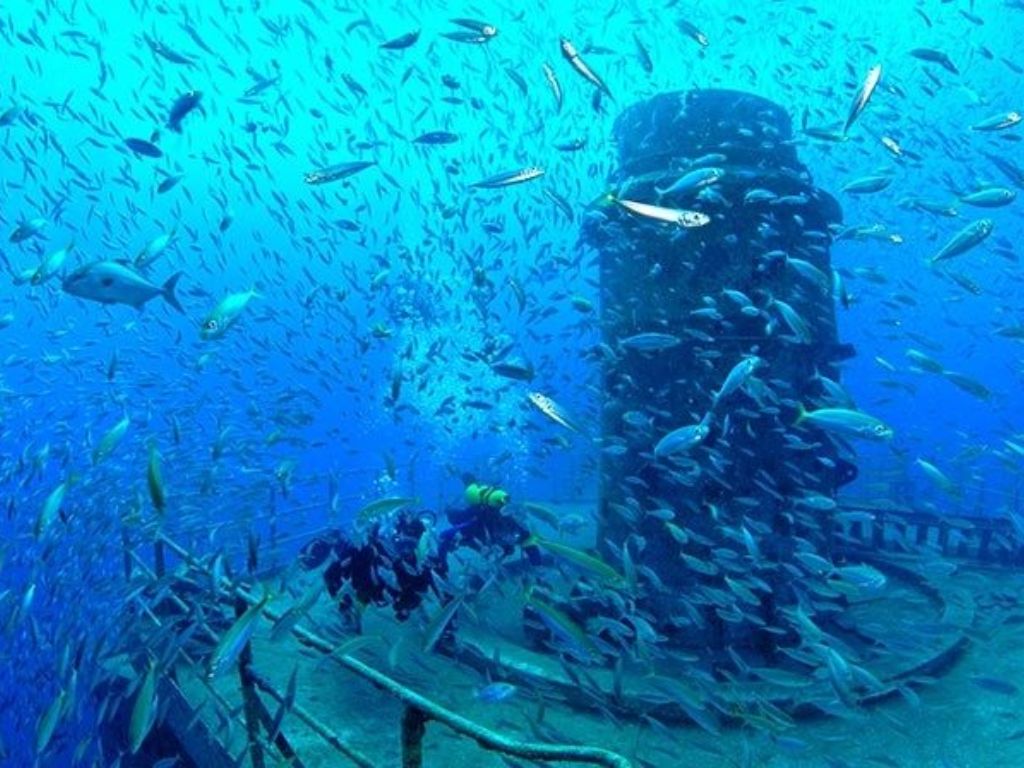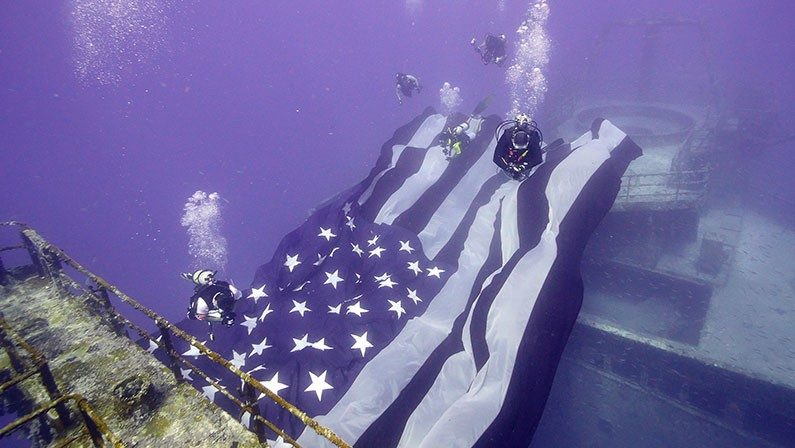Wreck divers look for certain elements when choosing a site: schematics; variety of depths; water temperatures and conditions; and, of course, wreck wildlife. In short, no one wants a boring dive.
As the second largest artificial dive site in the world, and the biggest located in the tropical waters of the Florida Keys National Marine Sanctuary, the U.S.N.S. General Hoyt S. Vandenberg – or the USS Vandenberg for short – is one of the best Florida wreck dives with a full list of desirable features.
The USS Vandenberg had a long and interesting history of deployment in the U.S. Armed Forces, beginning life during World War II, before being transferred from Army to Navy to the Air Forces. She ended up refitted as one of ten Missile Range Instrumentation Ships, before being retired in the Eighties, used as movie set on Virus in the Nineties, and finally transferred to the Maritime Administration and eventually sunk about seven miles off the coast off Key West in 2009.

Thus, the Vandenberg’s still-intact antenna, radar dishes and telescopes, installed on the wheelhouse and in the weather balloon hangar at the dawn of the Space Age, make for prime landing and photo opportunities. Access is available to compartments of all kinds, though if you wish to view the length of the hull, all 520 feet of it (about two American football fields end-to-end); enter the ship’s inner space; or explore bow to stern, then you’ll need to take more than one dive. There’s simply too much wreck to take in at once.
At approximately ten stories high, the Vandenberg is settled upright on her keel, with dive spots beginning at 40 feet down and concluding at 150 feet below the surface. The average water temperature in these southernmost U.S. waters is a lovely 28 degrees Celsius. It’s also brilliantly clear here, with an average visibility range of 30-60 feet (though on exceptional days, it can extend to 100 feet or more).

For marine life enthusiasts, this wreck is host to numerous large species of reef and bottom dwellers, including the colourful parrotfish and other wrasses; the romantically named damselfish (tiny anemone fish); and the not-so quixotically designated surgeonfish, known for its scalpel-sharp spine. Charters take off from the docks at Key West to hunt for “trophy wreck fish” here, so don’t be surprised to see a variety of dive, snorkelling and fishing boats lurking on the surface near the wreck site. The deeper you go, the more elusive fish and invertebrates you’ll see, including Nassau grouper, goliath grouper, barracuda, sharks, eel, conch, octopus and rock lobster.
Although your average or even novice diver can explore the Vandenberg quite comfortably, the currents can be unexpectedly strong. Divers should have an experienced team leading the way, and always carry knives in case of entanglement and use a buddy system. Other divers entering compartments can kick up the silt, and it’s easy to become disoriented. As always, at large or small dive sites, natural or artificial ones, safety is the main concern. Fortunately, the Vandenberg offers exactly what most experienced divers relish: a dive site so intriguing, a repeat visit is a must.
Written by Jen Karetnick



